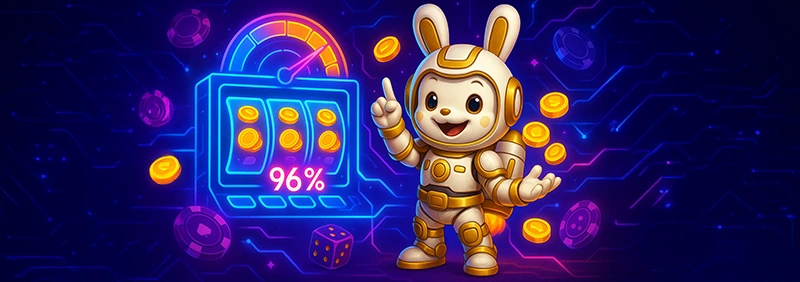Home > Casino Lab > Science of Slots > RTP Demystified: Why “Return to Player” Is the Key to Your Winnings
RTP Demystified: Why “Return to Player” Is the Key to Your Winnings
When players choose a slot machine, they often focus on themes, graphics, or bonus features. Yet behind the reels lies one of the most important metrics in gambling: the Return to Player (RTP). Expressed as a percentage, RTP tells you how much of the money wagered on a game is theoretically returned to players over the long term. Understanding RTP is essential for making informed choices, managing expectations, and grasping how casinos secure their advantage.

What Exactly Is RTP?
RTP, or Return to Player, is a statistical calculation that represents the long-term payout rate of a casino game. For example, a slot with an RTP of 96% means that, on average, it will return $96 for every $100 wagered. It is important to note, however, that this figure is calculated across millions of spins, not individual sessions.
This means that in the short term, results vary wildly—some players may hit a jackpot after a few spins, while others may lose quickly. But in the long run, the RTP ensures that the game operates within predictable mathematical boundaries.
Why RTP Matters to Players
RTP is more than just a number—it is a tool that helps players understand their chances and manage risk. Choosing games with higher RTP percentages generally improves your odds of keeping your bankroll intact over time. For instance, a slot with 97% RTP is mathematically more favorable than one with 92%.
That said, RTP does not guarantee outcomes. Even with a high-RTP slot, luck plays a dominant role in short-term play. What RTP does is set expectations and help players make smarter decisions when selecting games.
RTP, House Edge, and the Casino Model
The flip side of RTP is the house edge, which represents the casino’s long-term profit margin. If a slot has an RTP of 96%, the house edge is 4%. This balance ensures that while players can enjoy wins, the casino always maintains a mathematical advantage.
Understanding this relationship is crucial: it explains why casinos remain profitable even though individual players occasionally score massive payouts. RTP is not about predicting wins but about defining the statistical framework within which the game operates.
Common Misconceptions About RTP
Many players misunderstand RTP, thinking it guarantees a return during their session. In reality, RTP is a long-term average, not a short-term promise. A game with 96% RTP does not mean you will get back $96 for every $100 you wager today—it means that across countless spins, the game will pay out at that rate.
Another misconception is that RTP directly influences volatility. While related, these are separate concepts: RTP defines the overall payout percentage, while volatility determines the distribution of wins—frequent small payouts or rare large jackpots.
The Future of RTP in Online Casinos
As iGaming evolves, transparency around RTP is becoming more important. Many online casinos now display RTP values directly in game menus, and some Web3 casinos go further by making RTP calculations provably fair and verifiable on the blockchain.
By 2030, it is likely that RTP will not only remain a key metric but also become more dynamic, adapting in real time to new casino models that integrate player ownership and DeFi mechanics.
Conclusion
RTP is one of the most critical concepts in gambling, shaping how slots work and how casinos maintain profitability. For players, it provides a valuable benchmark for choosing games and managing bankrolls realistically.
While luck remains the driving force behind short-term play, RTP ensures that the mathematics of gambling are transparent and consistent over time.The next time you pick a slot, don’t just look at the design—check the RTP. It may not guarantee a win, but it could be the smartest choice you make.
